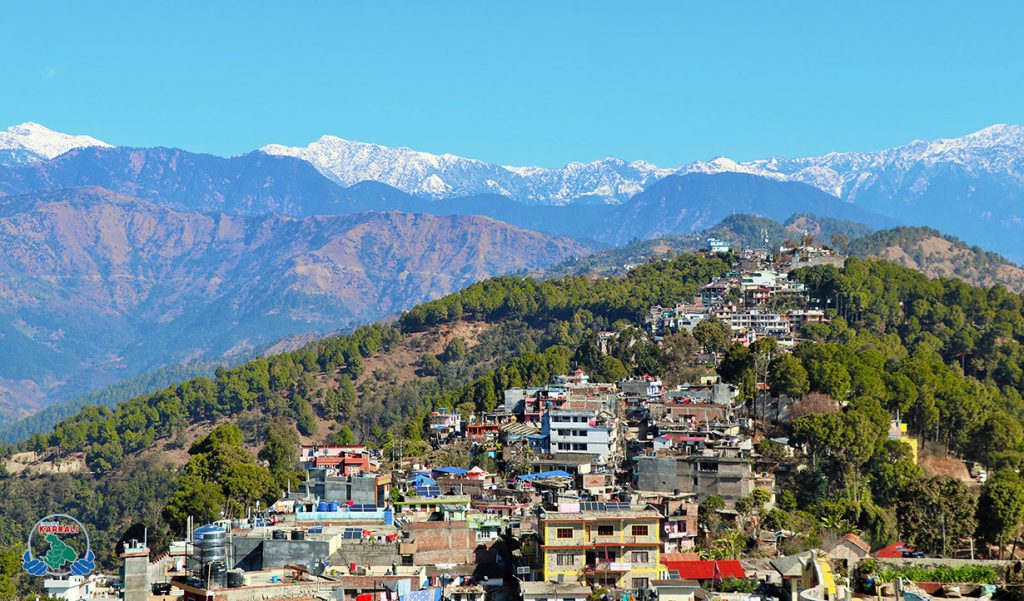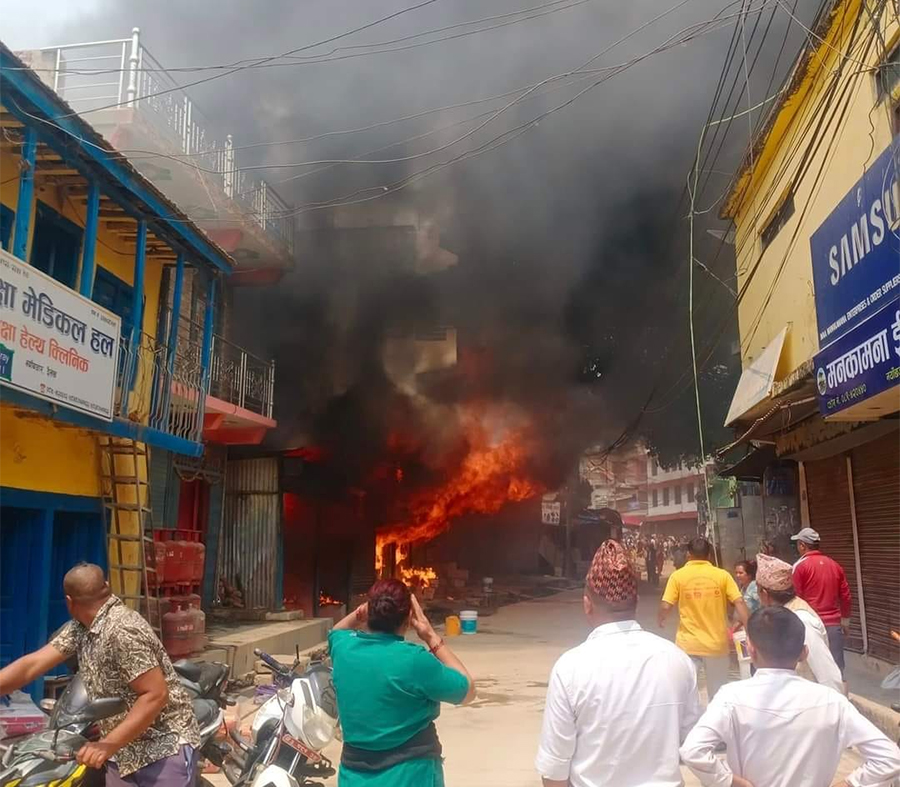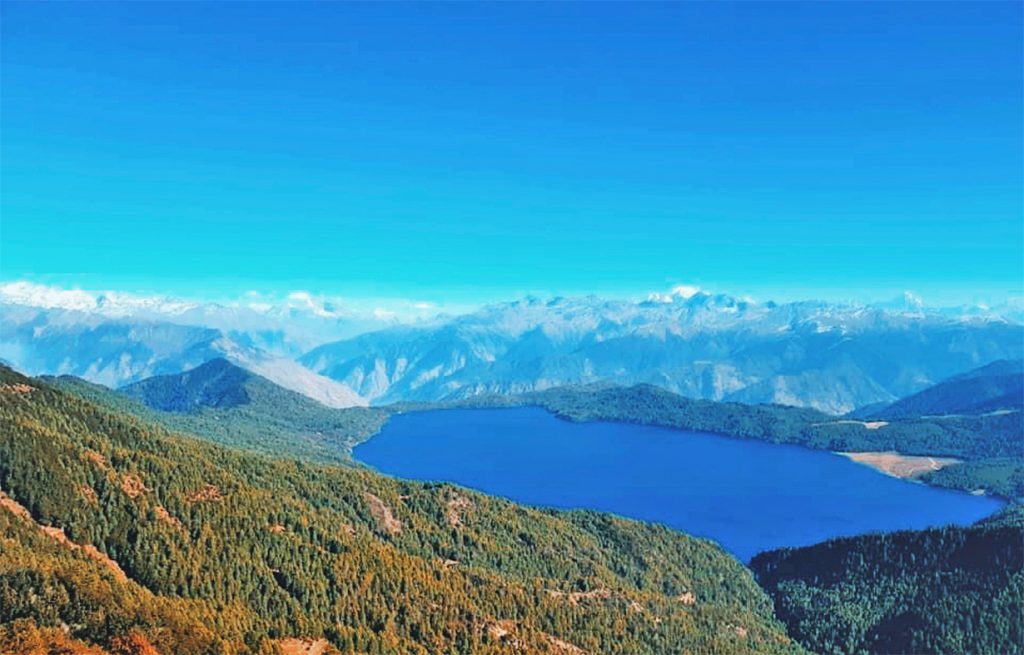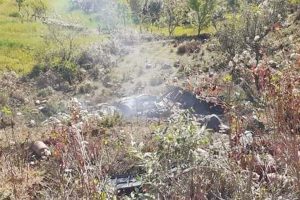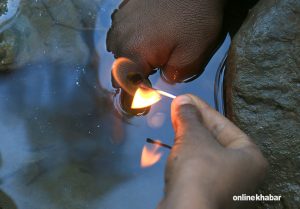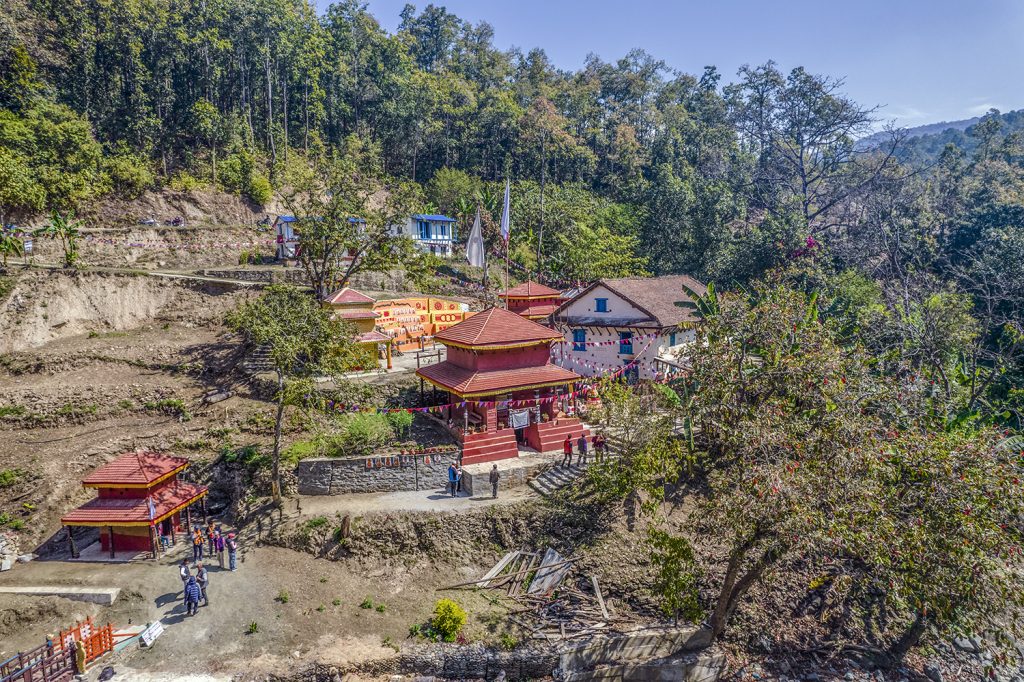
Located in the Karnali province, Dailekh is known for its scenic beauty. But the place is also rich in cultural heritage. Panchakoshi in Dailekh can be an example of this.
Dailekh is also famous for its Chaturmukhi Shiva temple, whose establishment dates back to the Lichhavi period. Many pilgrims also visit the Dullu Bajrayogini temple, which is dedicated to the Hindu goddess of power and is believed to be one of the oldest temples in Nepal.
That is not it. The place has many cultural and religious sites. It is safe to say that the place is ancient and the proof of that is the temples, shrines and stone inscriptions located in different places of the district, Panchakoshi in Dailekh being one of the most apparent examples.

What’s Panchakoshi anyway?
According to religious accounts, Shirasthan, Nabhisthan, Dhuleshwar, Paduka and Tallo Dungeshwar, located in the Dailekh district, are famous as Panchakoshi pilgrimage sites.
Since there are constant burning flames in Panchakoshi in Dailekh, it is also known as Jwala Tirtha or Agni Tirtha. In Skanda Purana, an ancient Hindu epic, this area is described as Baishwanara Tirtha.
It is believed that the ancient Khas Malla kings named this shrine Panchakoshi and started their pilgrimage and since then the name has stuck. So far, this is the only place in Nepal where petroleum products can be extracted.
Although the origin of the Nepali language is considered to be Sinja in Jumla, the oldest record of the language can be found in the region of Panchakoshi in Dailekh.
Literally, Panchakoshi means five rivers. In Dailekh, the following five holy sites located near rivers are referred to as Panchakoshi collectively.

1. Shirasthan
Located in Rawatkot of Dullu municipality, this temple is near the Shirasthan river. According to Swasthani, a Hindu epic, Shiva was carrying the remains of Sati Devi and travelling around, and Devi’s head (“shira” fell in this area.
In this area, there are other temples like Jwalaghar, Kalbhairav Kalsaini, Batukbhairav, Shivling and Dharamshala.
The flame that burns continuously is being worshipped as a god for hundreds of years. If the fame runs out in the Chandannath temple in Jumla and Badimalika temple in Doti, the flame from Jwalaghar, Panchakoshi in Dailekh, is taken to light the flames.
2. Nabhisthan

Located in Gamaudi of Dullu municipality, this temple is near the Nabhisthan river. According to Swasthani, Sati Devi’s navel (“nabhi”) fell off in this area. Since then, the region has been called Nabhisthan.

Like Shirsasthan, Nabhisthan of Panchakoshi in Dailekh also has two places with flames coming out – Brahmajwala and Indrajwala. The area also has temples of Bhairav, Shiva and Mansaath as well as the famous shami tree (Prosopis cineraria). The tree said to be more than a hundred years old is one of the main attractions of Nabhisthan.
3. Dhuleshwar

The 13th-century Dhuleshwar temple, located in Badlamji of Dullu municipality, is believed to be called Dhuleshwar because dust (“dhulo” in Nepali) flies on every full moon, no moon and the first day of the solar month.
Not only this, it is believed that this place was worshipped as Dhuleshwar of Panchakoshi in Dailekh because the ashes of Sati Devi’s body fell in the area.
In this area, there are idols of Umamaheswara, Shivaling, idols of Nandi the bull, Agni Kunda, the temple of Bhairava and a dharamshala. There is a tradition of performing pooja every day, but a special pooja is held during the Bada Dashain and Chaite Dashain festivals.
4. Paduka

There are idols from the fourteenth century in Paduka of Dullu municipality. According to Swasthani, the legs (“pad”) of the Sati Devi fell here and due to that, the place is called Paduka.
Until a few decades ago, flames used to burn continuously in this area. But a flood in Panchakoshi in Dailekh has killed the flame.
There are no temples in the Paduka, but there are idols of Shiva, Bhairava, Gorakhnath, Buddha, Jain, Laxminaran, Ganesha, Machhindranath, Shivling etc. Because these idols are in the open, the sun and rain are damaging them day by day.
There is a tradition of offering khir to Shiva on the third Tuesday of May. Apart from that, locals conduct a special pooja on Bada Dashain as they offer the Bhairav a sacrifice.
There are old archives in the area dating back to Ashok Challa, an old Khas king.
5. Sideshwar Mahadev, Tallo Dugeshwar

Sidheshwar Mahadev is connected with Karnali Highway located in Katuwal in Dugeshwar rural municipality.
Apart from the Sidheshwar Mahadev temple at the confluence of the Kanarali and Loher rivers in Panchakoshi in Dailekh, there are temples of various deities including Kalika Bhagwati, Ganeshji, Bhairav Kalashaini and Batuk Bhairav.
There is a tradition of lighting a lamp by bringing fire from Nabhisthan. There is a popular belief that if the lamp goes off, there will be unfortunate events such as drought, famine and starvation.






